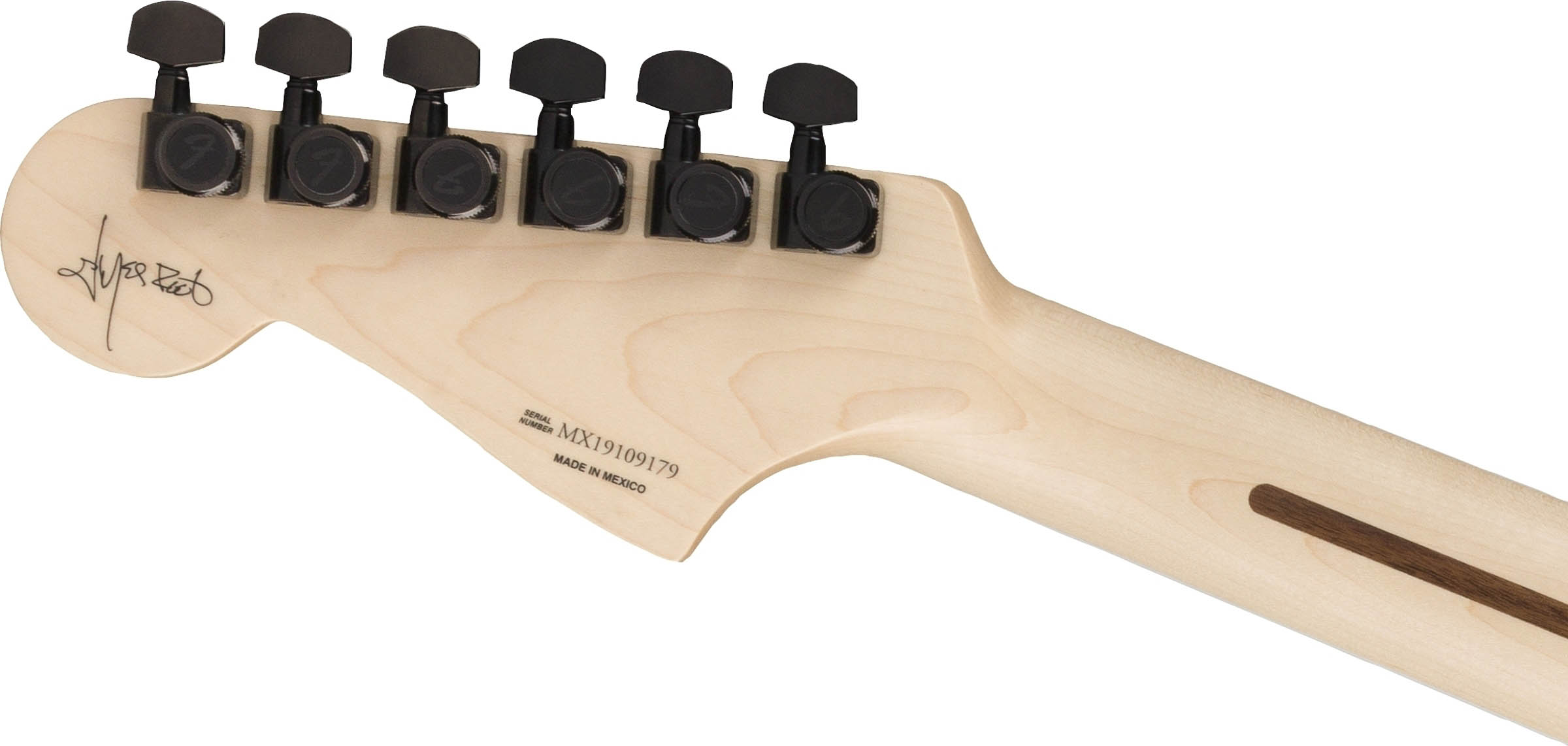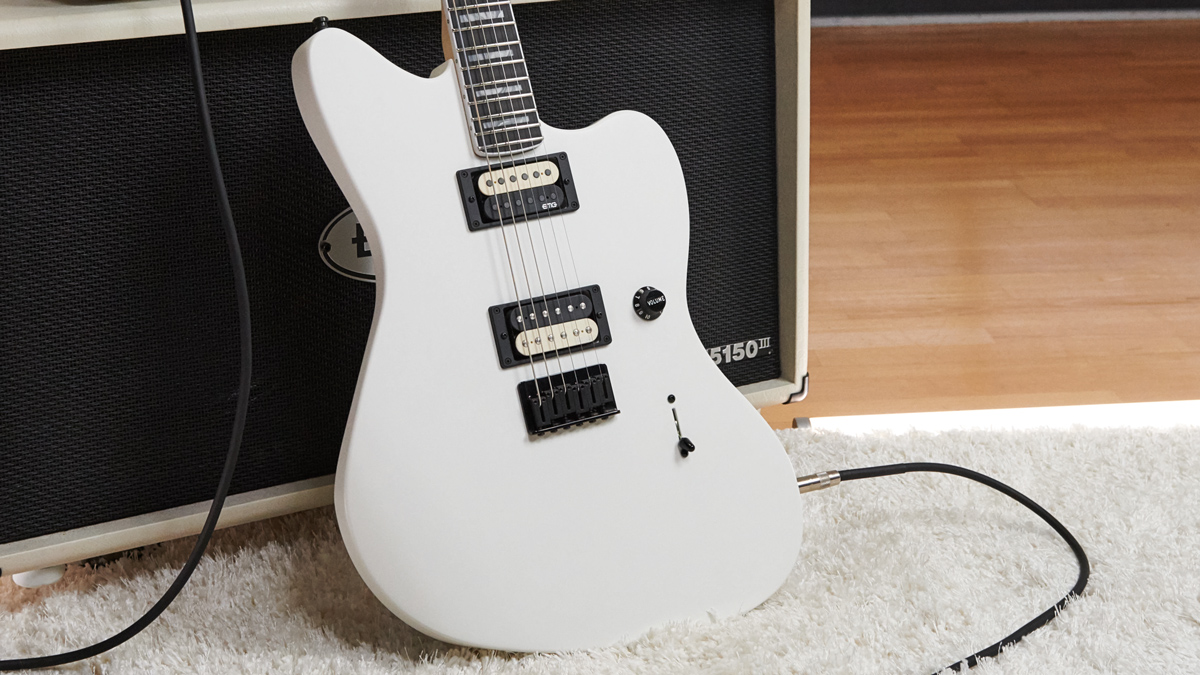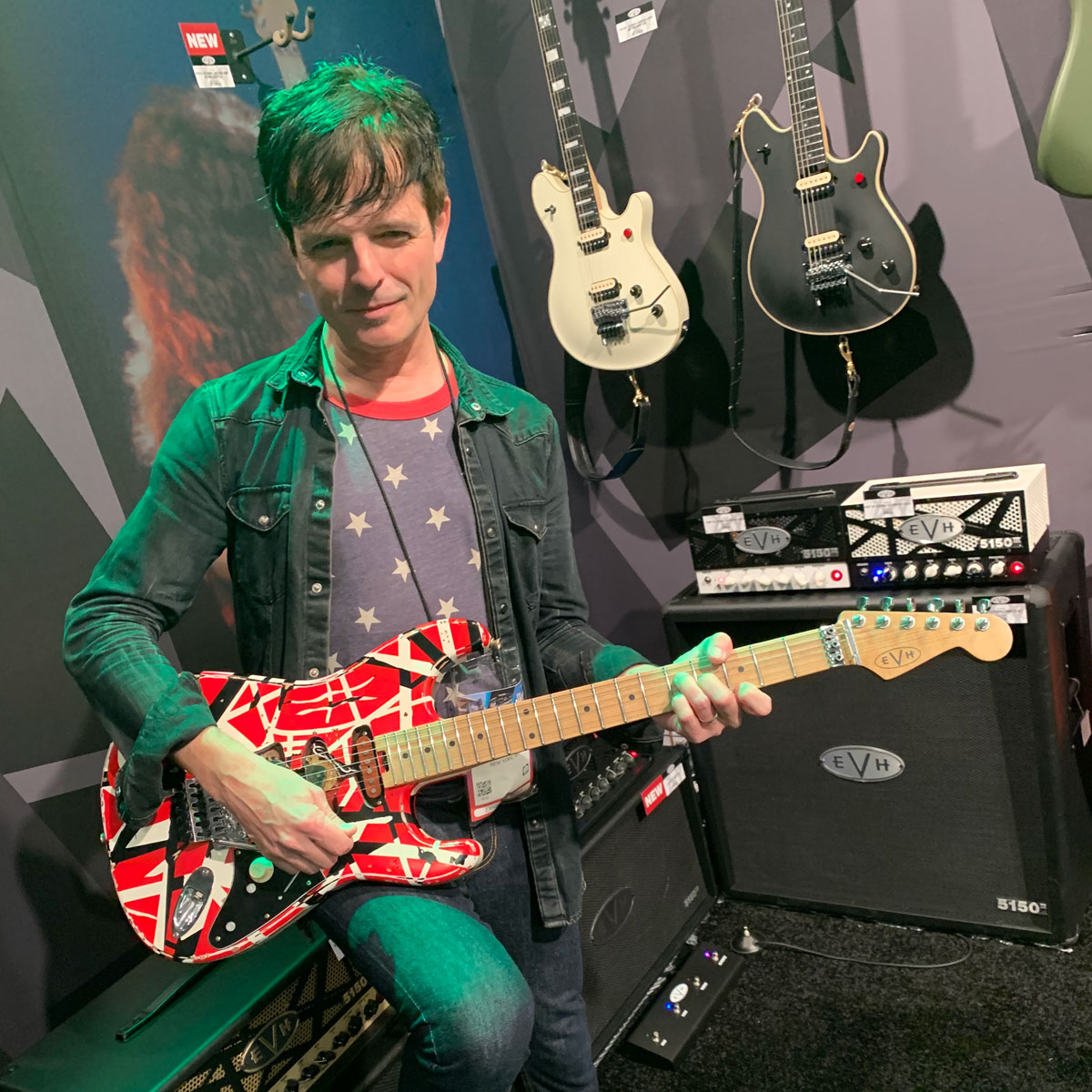Guitar World Verdict
For all its starkness and simplicity, the Fender Jim Root Jazzmaster V4 is Root’s most refined signature guitar yet – a veritable metal machine with pulverizing tone and fluent ergonomics.
Pros
- +
Active EMGs are assertive with clear note-to-note definition.
- +
Effortless playability.
- +
Perfect for metal and performs well in lower tunings.
Cons
- -
A little minimally appointed for some?
You can trust Guitar World
There is no gray area when it comes to Slipknot guitarist Jim Root’s vision for his signature models from Fender. It’s literally black and white.
Sure, only black and white finishes for the electric guitars in one respect, but more importantly, there's equally no gray area in each instrument's concept. If anything, his signature instruments clearly sport the bare minimum to get the job done, and Root undoubtedly loves using Fender’s iconic shapes without any of the bells and whistles associated with their original formulas.
His latest signature model, the Fender Jim Root Jazzmaster V4, shows off a more elevated look with block inlays and open-coil pickups, but still remains as stripped down as his other guitars and is designed to deliver in-your-face tone with brute force.

Features
With classic offset contours, a dense body shape and a spartan control layout, the Fender Jim Root Jazzmaster V4 seriously makes you appreciate how capable this artist model is for metal.
Uncomplicated and unpretentious, the guitar features a mahogany slab body, contoured neck heel, maple neck with a slim “C”-shaped profile, a bound ebony fingerboard with a 12–inch radius, 22 jumbo frets and block position inlays, EMG Jim Root Signature Daemonum open-coil active humbucking pickups, single volume control knob and three-way pickup switch, hard-tail string-through-body bridge, and Fender locking tuners.

The bound ebony fingerboard’s super-flat 12–inch radius removes any chance of fretting out when bending sky-high notes.

The minimalist aesthetic continues through to the Jazzmaster's controls, with just a single volume control and a three-way pickup selector switch – a far cry from your regular Jazzmaster.

A set of locking tuners helps keep Root's Jazzmaster stable.
Performance
The Jim Root Jazzmaster V4 looks even more stark arriving in a matte satin finish in polar white, but it is a well-balanced guitar with sleek belly and forearm contours that accommodate a comfortable playing experience.
There’s also nothing fiddly about it; the volume knob is right where you need it to be for exacting output control, and the selector switch is placed where you won’t knock into it if you thrash around.
All the latest guitar news, interviews, lessons, reviews, deals and more, direct to your inbox!
There’s no mistaking the Jim Root Jazzmaster V4 as a guitar made to precisely execute drop tunings and all forms of metal brutality
Fender’s carved neck heel smoothly cups the palm of your hand when you find yourself shredding past the 14th fret, and I’m amused by the large luminlay fluorescent side dots that really emphasize where you are on the neck if it ever seems unclear (a request from Root for navigating the neck when walking onto blacked-out stages).
There’s no mistaking the Jim Root Jazzmaster V4 as a guitar made to precisely execute drop tunings and all forms of metal guitar brutality. I had the guitar in standard and Drop B tunings, and it’s abundantly clear the active EMG Daemonum pickups complement the guitar’s aggressive leanings with percussive clarity and raw power.
The bridge and neck pickups exhibit full-bodied tone with a crisp and throaty midrange that excels with high-gain distortion and down-tunings with heavier string gauges. It’s an unbridled growl that remains taut for muscular riffing, and that’s exactly what I’d expect from this no-nonsense Jazzmaster.
Specs
- PRICE: $1,399.99, £1,139
- ORIGIN: Mexico
- TYPE: Offset solid-body electric
- BODY: Mahogany
- NECK: Maple, "thin C" profile, bolt-on
- SCALE LENGTH: 25.5" (648 mm)
- NUT/WIDTH: Synthetic bone, 1.685" (42.8 mm)
- FINGERBOARD: Bound ebony, pearloid block inlays, 305mm (12”) radius
- FRETS: 22, jumbo
- HARDWARE: 6-Saddle String-Through-Body Hardtail with Block Saddles, locking tuners, black
- ELECTRICS: EMG Jim Root Signature Daemonum Open-Coil Active Humbucking, 3-way toggle pickup selector switch, master volume
- LEFT-HANDERS: No
- FINISHES: Polar White (as reviewed)
- CONTACT: Fender
Paul Riario has been the tech/gear editor and online video presence for Guitar World for over 25 years. Paul is one of the few gear editors who has actually played and owned nearly all the original gear that most guitarists wax poetically about, and has survived this long by knowing every useless musical tidbit of classic rock, new wave, hair metal, grunge, and alternative genres. When Paul is not riding his road bike at any given moment, he remains a working musician, playing in two bands called SuperTrans Am and Radio Nashville.



